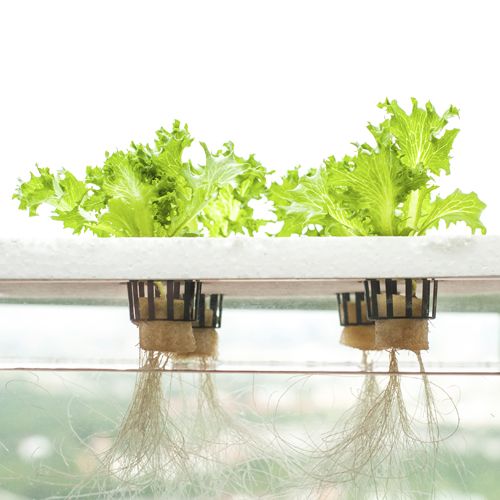My Cart
Your Shopping Cart is currently empty. Use Quick Order or Search to quickly add items to your order!
 Crystal
Risko
Crystal
Risko
Product Developer
Updated March 2018
Hydroponics is the process of growing plants without soil using
a nutrient-rich water solution. Hydroponic systems range in size from
small personal systems to large commercial systems that produce food for
public food supply. These systems use a variety of media to support the
plants, such as rock wool or clay beads. The main distinguishing feature
of any hydroponic system is that all of the nutrients needed by the plant
are supplied by a water solution.
While hydroponics might seem to be a relatively new technique, it’s actually a fairly old method of growing plants, dating back to the 1600s when scientists first began working with plants in water media. Sir Francis Bacon, whose work was published posthumously in Sylvas Sylvarum, was among the first scientists to implement hydroponics. Following Bacon, several others made advancements in the study of hydroponics, such as John Woodward, who attempted to grow spearmint in various water solutions.
The term hydroponics, from the Greek hydros for water and ponos for labor, was coined in the 1930s by William Gericke. During his time at University of California, Berkeley, Gericke grew tomato plants in water and nutrient solutions at his home. Two other scientists from Berkeley, Dennis Hoagland and Daniel Arnon, built on Gericke’s work when they wrote and published the bulletin Water Culture Method for Growing Plants without Soil in 1938. It includes a wealth of information about hydroponics, some of which is still referenced and used today.
Hydroponics was first used for commercial purposes during the late 1930s when tanks holding mineralized water were used to grow crops on Wake Island, a small landmass in the Pacific Ocean. Pan-Am Airways regularly made refueling stops at this island, and they fed airline staff and crew with the food that was grown there.
There are six types of frequently used hydroponic systems. Although these systems are the most common, other types and combinations of systems exist.
Aquaponics is the combination of hydroponics with aquaculture. Both plants and fish can be raised in an aquaponics system. In these systems, water from the tank containing the fish, or aquaculture, is pumped through a filter to remove solid wastes. The water is then pumped into the hydroponic system. In essence, the aquaculture is the nutrient reservoir for the plants. The water from the aquaculture is then removed from the hydroponic area, and occasionally it goes through more filtration before traveling back to the fish. The plants in the hydroponics portion remove nutrients that they need from the aquaculture water. The nutrients that the plants need are toxic to the fish in high concentrations.